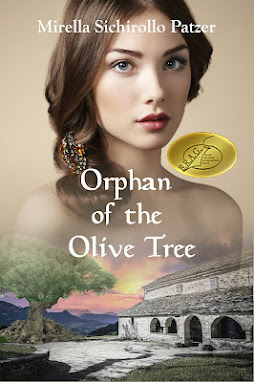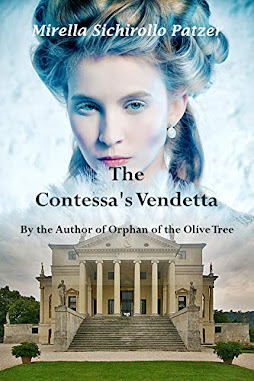19th Century
Adelina Patti (1843 - 1919)
Adelina Patti
1843 - 1919
Opera Singer
Diva
She is considered one of the most famous sopranos in history due to the beauty of her lyric voice and the unsurpassed quality of her bel canto technique. Giuseppe Verdi, wold famous composer, called her the greatest vocalist that he ever heard.
Adelina was the youngest child of tenor Salvatore Patti (1800–1869) and soprano Caterina Barilli (died 1870). Her Italian parents were both working in Madrid, Spain, at the time. Her elder sisters, Amalia and Carlotta Patti were also singers.
Adelina and her family moved to New York City when she was a young child. She grew up in the Wakefield section of the Bronx. To this day, her family's home still stands.
Her professional singing career began in childhood where she developed into a coloratura soprano. It is believed that Patti learned much of her singing technique from her brother-in-law Maurice Strakosch, although later in life Patti, like many famous singers, claimed that she was entirely self-taught.
Adelina and her family moved to New York City when she was a young child. She grew up in the Wakefield section of the Bronx. To this day, her family's home still stands.
Age 15
Her professional singing career began in childhood where she developed into a coloratura soprano. It is believed that Patti learned much of her singing technique from her brother-in-law Maurice Strakosch, although later in life Patti, like many famous singers, claimed that she was entirely self-taught.
In 1861, at the age of eighteen, she was invited to Covent Garden, to take the soprano rôle of Amina in Bellini's La sonnambula. Her performance was a resounding success. With the proceeds, she purchased a house in Clapham where she travelled to perform in Paris and Vienna.
In 1862 she sang John Howard Payne's Home, Sweet Home at the White House for Abraham and Mary Lincoln, who were mourning for their son Willie, who had died of typhoid. The Lincolns were moved to tears and requested an encore. This song would forever became associated with Adelina Patti. She performed it many times as an encore by popular request.
Patti sang in the United States, all over Europe, including Russia; and in South America, inspiring popular frenzy and critical raves wherever she went. Her girlish good looks made her an appealing stage presence. In her prime, she reportedly had a beautiful soprano voice of birdlike purity.
Patti helped give fame to the title "Diva". In her prime, Patti demanded to be paid $5000 a night, in gold, before the performance. Her contracts stipulated that her name be top-billed and larger than any other name in the cast. Her contracts also said that while she was "free to attend all rehearsals, she was not obligated to attend any." She was known to have a stubborn personality and sharp business sense. She reportedly had a parrot whom she had trained to shriek, "CASH! CASH!"
Patti's last tour to the United States in 1903 was a critical and personal failure. From then on she restricted herself to the occasional concert here or there, or to private performances at the little theater she built in her home at Craig-y-Nos in Wales.
By her 60s, with her voice was well past its prime. Many decades of busy use had weakened her breath control. Nonetheless, the purity of her tone and the smoothness of her legato line remain uniquely impressive. The records also display a lively singing personality as well as a surprisingly strong chest voice and a mellow timbre. Her trill is wonderful and her diction excellent. Overall her discs have a charm and musicality that give us a hint of why, at her peak, she commanded $5000 a night.
Patti's piano accompanist Landon Ronald wrote: "When the little trumpet gave forth the beautiful tones, she went into ecstasies! She threw kisses into the trumpet and kept on saying, ‘Ah! Goodness me! Now I understand why I am Patti! Oh yes! What a voice! What an artist! I understand everything! Her enthusiasm was so naïve and genuine that the fact that she was praising her own voice seemed to us all to be right and proper."
Patti's personal life was not as successful as her professional life. It was widely believed she had a dalliance with the tenor Giovanni Mario, who bragged at Patti's first wedding that he had made love to her many times.
Engaged as a minor to Henri de Lossy, Baron of Ville, Patti married three times: first, in 1868, to Henri de Roger de Cahusac, marquess of Caux (1826-1889). The marriage soon collapsed; both had affairs and de Caux was granted a legal separation in 1877 and divorced in 1885. The union was dissolved with bitterness and cost her half her fortune. There was a report in The New York Times in April 1875 that the Marquis was killed in a duel in St Petersburg whilst Adelina was fulfilling a professional engagement!
She lived with the tenor Ernesto Nicolini (1834-1898) for many years until, following her divorce from Caux, she was able to marry him in 1886. That marriage lasted until his death and was seemingly happy, but Nicolini cut Patti out of his will, suggesting some tension in the last years.
Patti's third and last marriage was to Baron Rolf Cederström (1870–1947), a priggish, but handsome, Swedish aristocrat many years her junior. He severely curtailed Patti's social life. He cut down her domestic staff from 40 to 18, but gave her the devotion and flattery that she needed. He became Patti's sole legatee. After her death, he married a woman much younger than he. Their only daughter, Brita Yvonne Cederström (born 1924), became Adelina Patti's sole heir.
In her retirement, Adelina Patti, Baroness Cederström, settled in the Swansea valley in south Wales, where she purchased Craig-y-Nos Castle. There she had her own private theatre, a minature version of the one at Bayreuth. She made some of her recordings at Craig-y-Nos.
She died at Craig-y-Nos and eight months later was buried near her father at the Père Lachaise Cemetery in Paris.
Article Source: Wikipedia



























Post a Comment
0 Comments